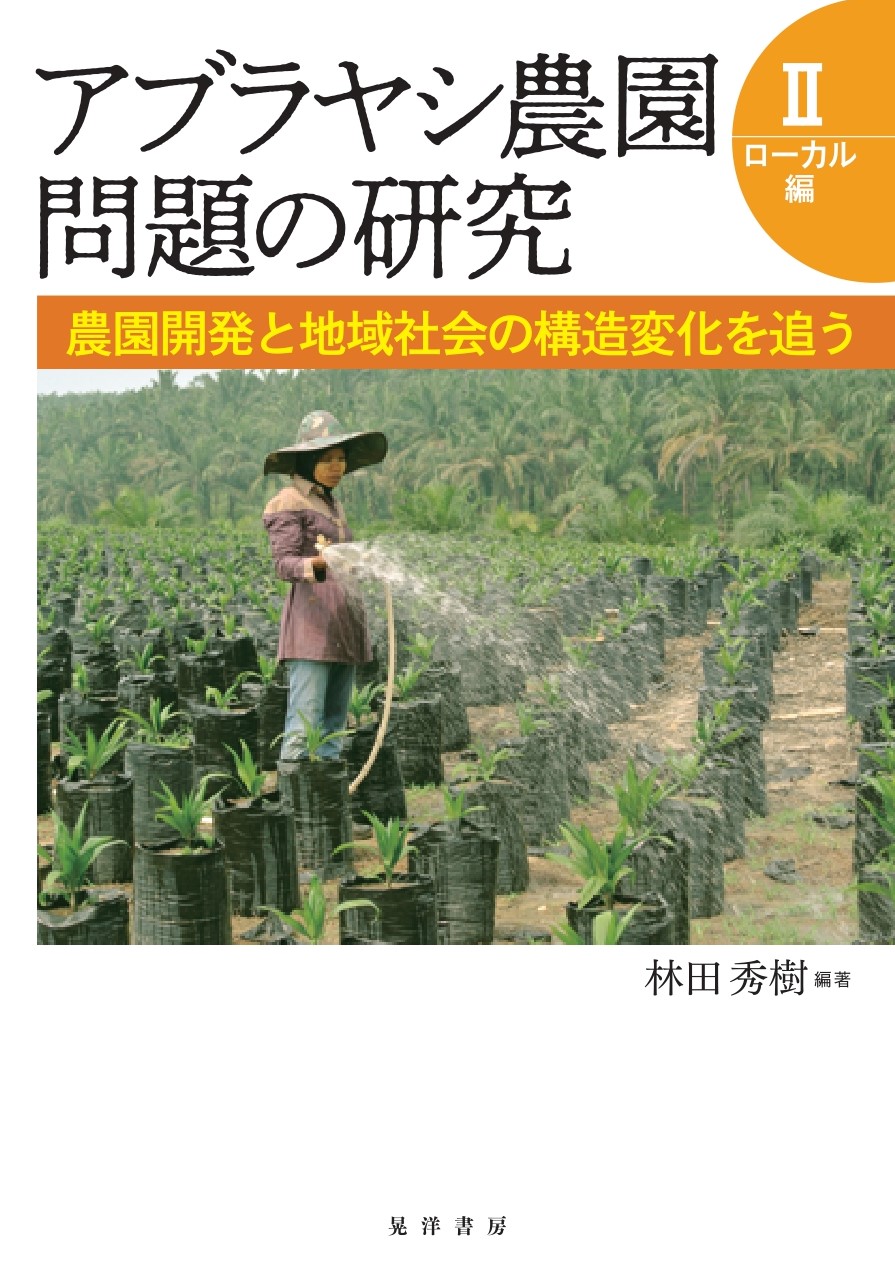
Title
Aburayashi Nouen Mondai no Kenkyu II [Local-hen] (Research on Oil Palm Plantation Issues, Volume II: Local Issues - Understanding plantation development and changes to local society structure)
Size
316 pages, A5 format
Language
Japanese
Released
March 10, 2021
ISBN
9784771034341
Published by
KOYO SHOBO
Book Info
See Book Availability at Library
Japanese Page
There are likely very few Japanese who, when they hear the word “oil palm,” can picture the tightly packed clusters of orange fruit. Palm oil made from oil palms is rarely found in the cooking oil section of Japanese grocery stores. However, palm oil and palm kernel oil are, in fact, plant-based oils that are used in products such as confectioneries, chocolate, soap, and detergent that are near and dear to Japanese consumers.
Oil palms are well-suited for cultivation in tropical rainforest climates characterized by high temperatures and high precipitation year-round. The area under oil palm cultivation has expanded dramatically since 1970, especially in Malaysia, Indonesia, and other parts of Southeast Asia, led by the growing global demand for fats and oils. Oil palms have replaced rubber as the main crop on the Malay Peninsula, Sumatra Island, and Borneo Island, and cultivation has expanded into previously undeveloped hill and mountains as well as swampy lowland areas. Oil palms are cultivated not only on massive plantations but, also, on smallholder farms of individual farmers. The 1997 Southeast Asian haze, which affected a large swath of maritime Southeast Asia and was caused by the massive quantities of smoke generated by forest burning for plantation development combined with other factors, sparked interest in these circumstances at both local and international levels. The expansion of plantations into undeveloped areas, which represents the flip side of tropical deforestation, has led to greater attention being paid to the working environment of production sites and widespread understanding of plantation expansion as a critical issue with global environment and human rights implications.
Together with its sister book published at the same time (Volume I: Global Issues), this book compiles research related to the overall issue of oil palm plantation expansion, problems thereof, and indicators for the future conducted primarily by members of the Oil Palm Study Circle a group that brought together researchers and practitioners from diverse disciplines and met monthly from 2009 to 2018. The meetings stimulated vigorous discussions that cut across disciplinary and professional boundaries. Volume II: Local Issues compiles the work of myself and other authors who conducted field research. The book’s subtitle is Understanding plantation development and changes to local society structure. Regarding issues associated with oil palm plantations, attention tends to focus on tropical forest loss and workers’ human rights. While it goes without saying that these are important issues, what I tried to remain keenly aware of while writing this book was the fact that, like it or not, over the past 50 years, the oil palm industry has set down extensive and deep roots in local economies, societies, and ecological environments, especially in peripheral areas of Malaysia and Indonesia. When you visit a plantation site, you quickly see that there are countless workers, employees, farmers, proprietors, and families, whose daily lives and life strategies are deeply intertwined with oil palm. And, when you come into close contact with the actions and thinking of such individuals, you undoubtedly feel the hollowness of discussions on the propriety or impropriety of oil palm plantation development. It is my greatest hope that, after reading this book, the reader comes away with a sense of the depth of research on oil palm plantation issues.
(Written by NAGATA Junji, Professor, Graduate School of Arts and Sciences / 2021)



 Find a book
Find a book

